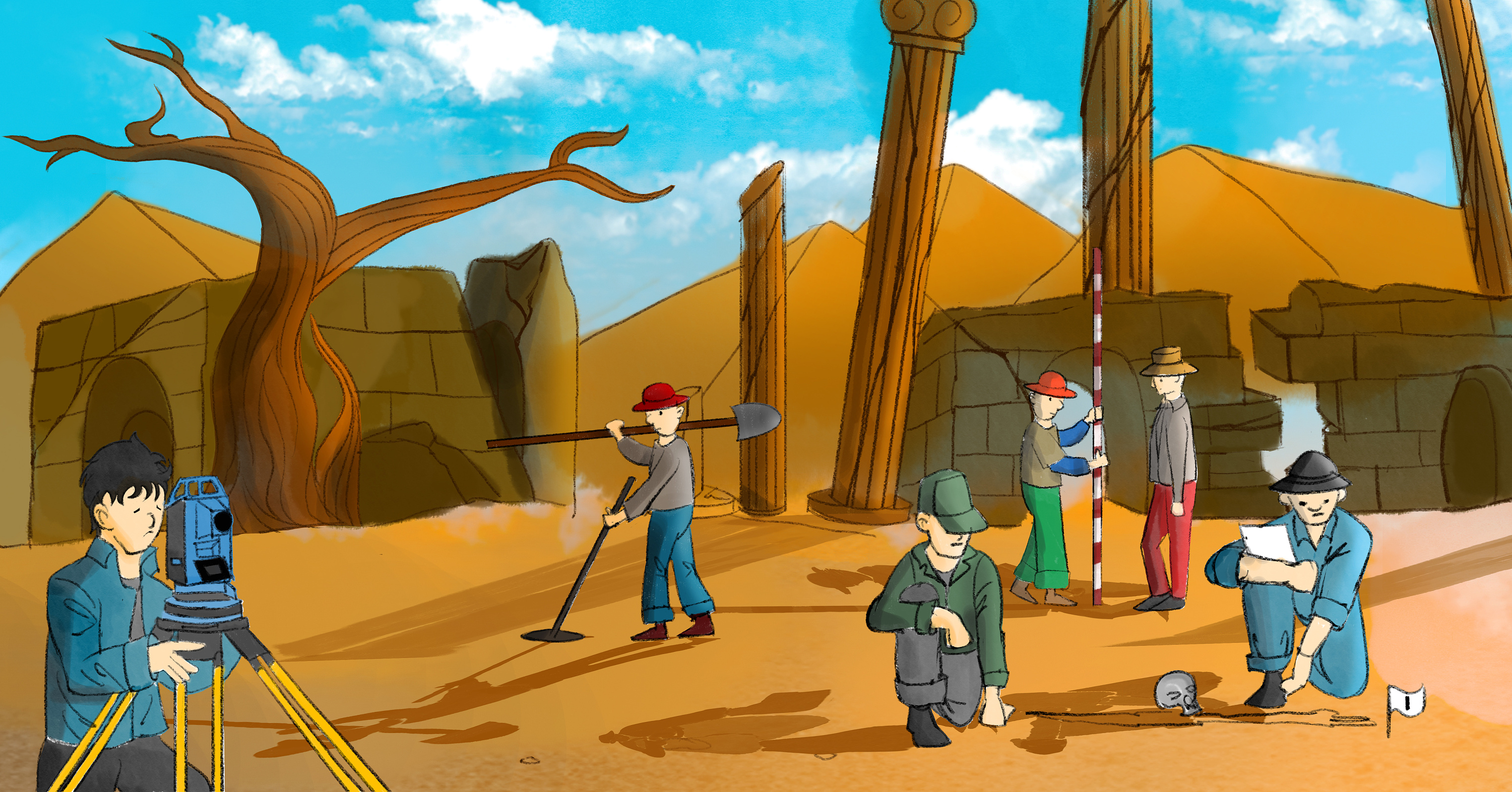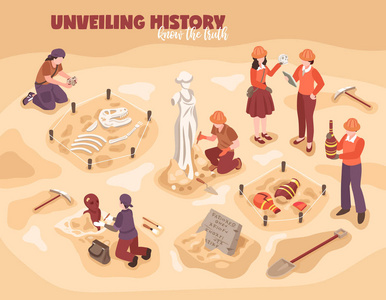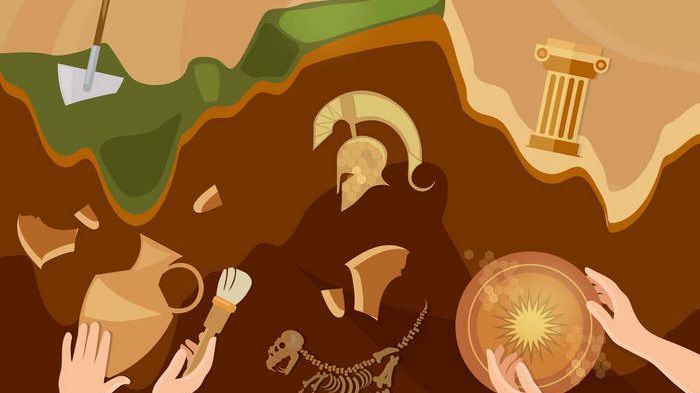Utilizing the isotic glutinous chemistry, a team of the University of Geneva (UNIGE) discovered new information about the Valega (Swiss) Camita Cemetery: 14%of the people buried at the place 6000 years ago were not locals. More importantly, the study showed that the agricultural and animal husbandry society in the middle of the Neolithic era -one of the oldest society known in western Switzerland -is relatively equal.
The ratio of carbon, nitrogen and sulfur in the bones indicates that all members of the community, including people from other places, can get the same food resources. These results are published in the "Archaeological Science Magazine: Report".
The Neolithic era marks the beginning of animal husbandry and agriculture. In Switzerland, this period spans between 5500 BC and 2200 BC. The earliest agricultural and animal husbandry communities gradually changed from a predatory economy (hunting and collection to provide necessary nutrients for survival) to the production economy.
This fundamentally changed the diet and functional dynamics of the people in the Neolithic era. Individual bones and teeth retain the chemical traces that scientists can detect and interpret.
The purpose of research by Déborah Rosselet-Christ, a doctoral student at the UNIGE Institute of Africa Archeology and Anthropology Laboratory, is to use the human remains of homogeneous analysis in the Neolithic era to understand their diet and activity more.
The level of certain isotopes of carbon, nitrogen, sulfur, and sulfur depends on the environment of each person's life and diet. Homotin is the atoms of the same number of electronics and protons but different numbers of neutrons. This very accurate and fine technology was first applied to the alpine farmers and animal husbandry population in the mid -Xintoli era in western Switzerland.

In the 1950s and 1990s, the Barmaz site in the Collombey-Muraz area in the Chablais area of Wallai was one of the oldest farm and pastoral social relics in western Switzerland. It consists of two cemeteries, which contains about 70 people's bones. The first author of the study, Déborah Rosselet-Christ, chose 49 of them (as many women and men). The protein sample, and the enamel fragments were collected from the second molar.
"The second molars are a teeth, and their crown is formed between the age of three to 8," the researchers explained.
"Once it is formed, the enamel will not be updated in the rest of their lives. Therefore, its chemical component reflects the environment of its owner in his childhood. 锶 (SR) is a good symbol of liquidity. The ratio of abundance (that is, their proportion) is very different due to the age of the surrounding rocks.
Analysis of the ratio of aperture of 49 individuals from Balmas showed that most individuals have a high degree of uniformity, and only 14%of the samples of the sample are obviously different, indicating that their sources are different.
"This technology can be sure that these people have not spent their lives in the first few years they were buried, but it was more difficult to determine where they came from," said Jocelyne Desideri, senior lecturer of African Archeology and Anthropology Laboratory in the University of the University of Science. The last author of the article.
"Our results show that people were moving at the time. This is not surprising, because some studies have emphasized the same phenomenon in other places and other times in the Neolithic era.
Collagen is used to determine the isotope ratio of carbon (Δ13C), nitrogen (Δ15N) and sulfur (Δ34s). Each measurement provides information about specific diet, such as the type of plants based on the type of photosynthesis, the amount of animal protein, or the intake of the aquatic animals used.

As the bones are constantly updated, the result involves only the last few years of personal life. In other words, scientists can infer that the diet of these former residents in the Balmas area is based on land (rather than aquatic) resources, and animal protein consumption is very high.
"What's more interesting is that we did not find any differences between men and women," pointed out Déborah Rosselet-Christ.
"Even between locals and non -local people. Therefore, these results show that they obtain food resources equally between different members of the group, regardless of their origin or gender. However, the situation is not always the case. There is a dietary difference between the gender of the New Stone Age of southern France.
However, scientists can prove that non -local people are only buried in one of the cemetery (Barmaz I), and the level of nitrogen is more than the level of nitrogen is higher in the Barmaz II. Given that the two cemeteries are at the same time (only 150 meters apart) at the same time, the latter observation proposes the problem of whether there is a social status difference between the two groups of deceased.
"Our homogenic measurement is an interesting supplement to other methods used in archeology," said JOcelyne Desideri. "They help clarify the life scenes of these early Alps farmers and animal husbandry society, and the relationship between individuals and their liquidity.
Déborah Rosselet-Christ is currently engaged in this work. As part of her doctoral dissertation, it was co-guided by JOcelyne Desideri and Massimo Chiaradia.
She cooperates with a multidisciplinary team that specializes in genetic, ancient disease science, calculus and morphology, and has expanded her research fields, including other sites of Walla and Valida Osta, Italy, covering a broader new new new During the Stone Age, other isotopes, such as 钕, may be very interesting in prehistoric archeological background.
Another study found that the diet of our ancestors is not always the main meat. About 11,000 years ago, humans shifted from hunting and collection to agriculture. The change of this revolution, known as the Neolithic Revolution, has greatly changed our diet.
For decades, scientists have always believed that the human groups in the previous agricultural period have eaten a lot of animal protein. However, the analysis has been hindered due to the scarcity of the intact human remains in the update of the world site. Therefore, in fact, people know very little about their diet at that time.

I am a doctoral candidate studying this theme in Morocco and a member of a research team. The team discovered some new opinions about the diet of the Stone Age.
Using new research technologies, we found that there is evidence that we have a plant -based diet that we are dominated by plants thousands of years before the emergence of agriculture.
Most research on the past agricultural population is carried out in the old stone era ruins in Europe and Asia. Therefore, our understanding of diet during this period is mainly based on the discovery of these areas. Our knowledge is also limited by poor preservation of certain materials such as North Africa.
Our research changed this. It challenged the long -term belief that the hunting collectors mainly rely on animal protein and increased their understanding of pre -agricultural diet in different regions.
Imagine that just checking their bones and teeth can distinguish what a person eats thousands of years ago.
This should be attributed to a charming technology called isotope analysis. Homotin is the tiny chemical mark of the food we eat, stored in our bones and teeth. They can save thousands of years. By studying them, we can directly understand the diet of ancient humans.
Since the 1970s, scientists have used stable isotope analysis to understand the diet and lifestyle of ancient human groups by analyzing collagen in bones. Collagen is a protein that exists in connective tissue, skin, tendon, bones and cartilage. For example, carbon isotope analysis is used to detect corn consumption of prehistoric humans in North America.
Researchers also used this technology to compare the diet of the European Naandetes and the early modern people (Homo sapiens). They analyzed the teeth and bones of people buried in the Talfrart cave in northeast of Morocco. Buried is intentional. Researchers refer to this location as the cemetery, because the tissue nature and occurrence of the tomb are very long. The cave is one of the best sites in northwestern Africa in the Paleolithic Age. Essence

It may be the oldest cemetery in North Africa. It has the oldest ancient human DNA in Africa, which allows scientists to represent the human genetic ancestors in the region.
The radioactive carbon related to human tombs related to Iberianlon culture dates back to 15,100 to 13,900 years ago.
Zoologists have confirmed that people have hunting Barbari sheep and other animal species in the surrounding environment, such as glaze, antelope and Marco. The mechanical remains found from the site show that they have also obtained various plant species native to the Mediterranean region, including sweet oaks, pine nuts, oats, beans and happy fruit.
This shows that the early human diet is more adaptable and resourceful than previously thought. Understanding this helps us understand the complexity and flexibility of prehistoric diet, and how these dietary habits affect our evolution and health.
参考文献: Déborah Rosselet-Christ et al, First Swiss alpine agropastoral societies: Contribution of isotope analysis to the study of their diet and mobility, Journal of Archaeological Science: Reports (2024). DOI: 10.1016/j.jasrep.2024.104585图片源于网络